Sales Performance Management Done Right: Um projeto para o crescimento das vendas
Um processo sólido de gestão do desempenho de vendas mantém as equipas no caminho certo, cumpre os objectivos e impulsiona o crescimento. Este guia abrange a definição de objectivos, o acompanhamento, o coaching e os incentivos para ajudar as empresas a criar uma estratégia escalável e eficaz de melhoria contínua.
Nesta página
Organizations that use SPM achieve 3x annual revenue growth compared to those that do not.
A key trend in the current sales landscape, sales performance management or SPM, is an innovative sales management discipline that uses next-generation tools and data-driven best practices to achieve superior sales results. From sales strategy plan to the organizational structure are improved upon under SPM to offer the company a sustained competitive advantage in the market.
And its importance cannot be overstated. According to InsightSquared, 81% of sales team members in organizations that have embraced SPM achieve their sales goals, compared to 25% in lagging organizations. The former companies also registered 3x annual revenue growth compared to the latter. Enough said.
If you’re wondering how to implement sales performance management (SPM) at your organization, read right on!
What is sales performance management (SPM)?
Sales Performance Management (SPM) is a strategic approach that helps organizations track, analyze, and improve sales performance through goal setting, real-time feedback, and data-driven insights. It ensures that sales teams stay motivated, aligned with business objectives, and continuously improve their results.
Key components of sales performance management:
- Goal setting & performance tracking: Establishing clear, measurable sales targets and monitoring progress in real time.
- Incentive compensation management: Designing and managing commission structures, bonuses, and rewards to drive motivation.
- Sales coaching & training: Providing ongoing feedback, skill development, and mentorship to improve individual and team performance.
- Data-driven decision-making: Leveraging analytics to identify trends, optimize strategies, and refine sales processes.
- Gamification & engagement: Using leaderboards, sales contests, and recognition programs to boost motivation and healthy competition.
By implementing SPM strategies, businesses can create a high-performing sales culture, improve quota attainment, and drive revenue growth. 🚀
The process of implementing a sales performance management system
Here’s how to successfully implement a sales performance management system, ensuring clear goals, streamlined tracking, and improved team performance.
1. Determine the metrics you want to measure
The performance metrics you measure as part of your SPM system should reflect the focus of your organization's success metrics. A few metrics you could consider measuring are:
Sales productivity metrics
These measure the efficiency with which your salespeople can reach their goals. The quicker they reach their sales targets, the higher their sales productivity. A few metrics to measure here are:
- Percentage of hours spent prospecting
- Percentage of hours spent on administrative tasks
- Percentage of closed deals that resulted in sales
Taxa de conversão
This metric refers to the percentage of leads converted to customers by each salesperson. It provides you with information about the quality of your leads and whether the organization has sufficient resources to nurture them into a sale.
Quota attainment
Quota attainment or individual quota attainment is a measure of the sales target's percentage that each sales rep has reached over a time period. This metric aids benchmarking, i.e., understanding the goals you have set for your sales team are too aggressive, too easy, or just right.
2. Get your sales team’s buy-in
Communicating your goals to your team and getting their buy-in into the metrics they’ll be assessed on is key for several reasons. Firstly, if your team feels they are part of the goal-setting process, their ownership over the goals will be considerably higher.
Secondly, clear and unambiguous communication of the goals you have in mind for your team is essential before your soldiers hit the battleground! Remember to allow your team to voice any concerns they may have and even push back if they choose to.
For instance, your team may feel certain goals are too aggressive or that measuring certain areas of performance is inappropriate. Once they have voiced their concerns, you could take either of two courses of action - course-correct and change the metrics you will be using or help your team understand how these goals and metrics tie into organizational objectives.
It could also be useful to involve your sales team in the goal-setting process from the beginning, leading to higher ownership.
3. Develop your sales team’s performance-improving skills
Now that you have determined what metrics you are going to track and you have your team’s buy-in into them, it’s time to ensure your sales reps have the right skills and resources to achieve them. An effective way to do this is by allowing your team to zoom in on the skills they want to improve and then leveraging this inherent interest to build up the skills they need to achieve organizational goals. You could then use methods such as offering them coaching tools, introducing them to mentors, or even a colleague who may have stellar skills in the area to get the job done.
4. Offer regular feedback to individual sales team members
To track and monitor your sales team’s performance, this final step of providing them with personalized feedback is important. A holistic performance review includes the following:
- The sales team member’s performance about documented goals that they are being assessed for
- Their improvement or actions are taken basis previous rounds of feedback
- Their successes and the strengths they have which have enabled these successes
- Constructive feedback about areas that offer room for improvement
- An overarching summary of their performance based on whether they met, did not meet or exceeded expectations
The components of sales performance management
Regarding sales performance management, it can be compelling to ask the good old questions centered around the four W’s and H, i.e., what to sell, where to sell, and how to sell.
1. Sales planning (where to sell)
Poor territory and quota planning can quickly lead to sales attrition - a costly affair for any organization. To guard against this and other negative consequences, such as poor employee morale, sales planning is an effective sales performance management tool.
It involves segmenting the market through account segmentation, quota setting, capacity planning, and territory allocation, followed by aligning the team to fit this segmentation.
2. Sales incentives (how to sell)
Incentive structures can be leveraged to course-correct sales team action in desired ways. The best incentive structures allow for both the maximization of individual earnings and advance the company’s bottom line.
It can be useful to keep commission structures flexible to be able to incorporate market changes quickly. However, it is also important to not change them so often as to leave salespeople confused.
3. Sales insights or what to sell
Advanced sales performance management software now captures data from throughout the sales organization and then delivers appropriate insights to different stakeholders. Sales leaders can use these insights to deliver considerable improvements on all sales metrics, including average deal size, deals closed, and more.
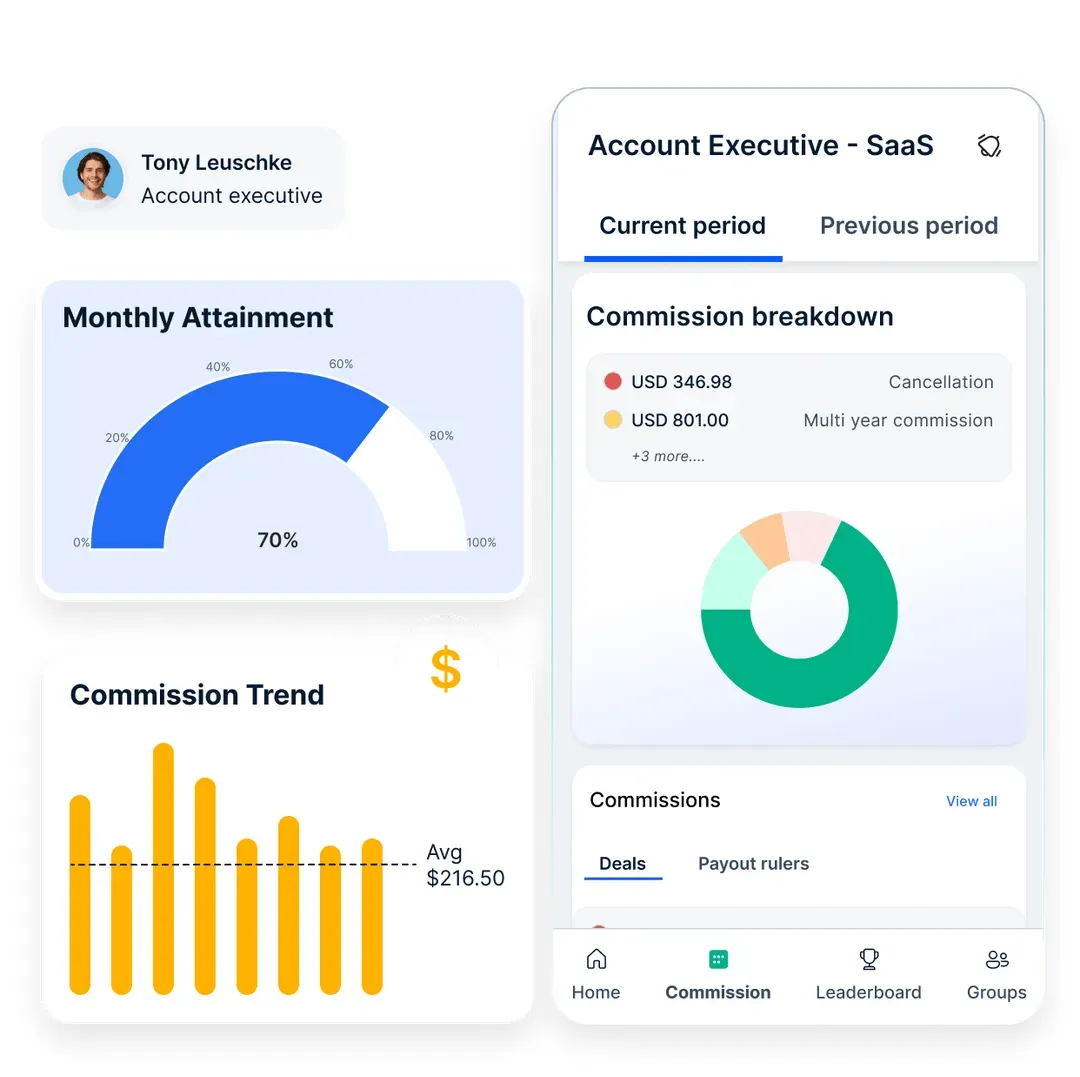
Drive Sales Performance with AI-Powered Insights
Compass gives you real-time analytics, automated incentives, and gamification to boost sales productivity. Track progress, optimize strategies, and keep your team engaged—all in one platform.
Start Optimizing Today
Types of sales management styles
As Steve W. Martin notes in the Harvard Business Review, there are broadly seven different sales management styles, each of which corresponds to a particular behavior pattern.
1. The mentors
Important drivers of sales success, the mentors represent the class of sales leaders who are sales experts and measure their success through revenue goals met or exceeded as well as individual sales team members’ success.
2. The expressive
Skilled at people management and with a panache for expressing their emotions and encouraging others to do the same, the expressions have a flair for both putting their team at ease and admonishing them as the situation demands.
3. The sergeants
With a title drawn from military lingo (and for a good reason!), the sergeants are hard workers who “rally their troops” or push them to work harder while at the same time displaying a high level of loyalty to their team, sometimes even rivaling that which they display towards the organization.
4. The teflons
Possessing a pleasant and agreeable disposition, the teflons are skilled at staying above the workplaces' day-to-day politics. However, they typically do not manage to form close relationships with their team members.
5. The micromanagers
Highly methodical and organized, the micromanagers expect the same from their team members and demand things done their way. Their sense of responsibility to their organizations is strong, and they pride themselves on meeting their revenue goals.
6. The overconfidents
Exceptional on sales calls and gregarious in public, the overconfident are typically closed to feedback and will get the job done at any cost, doing things their own way.
7. The amateurs
The amateurs are sales managers who aren’t necessarily new to the role but find themselves outside their comfort zone in it. They typically find themselves in an identity crisis until they can garner enough sales experience and improve their game.
The role of sales performance management in accountability
A strong Sales Performance Management (SPM) framework ensures sales teams not only meet but exceed expectations, especially in selling Dermatology Practice Management Software. More than just tracking metrics, SPM fosters a culture of accountability where every team member—sales reps and support staff alike—takes ownership of their impact.
Key elements of SPM include:
✅ Clear goals that align with business objectives.
✅ Real-time feedback to reinforce success and address challenges.
✅ Data-driven insights for continuous performance improvement.
By integrating these strategies, organizations create a transparent, high-performing sales culture where accountability drives engagement, teamwork, and measurable success. SPM isn’t just a strategy—it’s the foundation of a motivated and results-driven sales force.
Strategies for fostering accountability through sales performance management
Seguem-se as estratégias para promover a responsabilização através do SPM:
1. Definir expectativas claras
A base da responsabilidade é a clareza das expectativas. Os líderes de vendas têm de comunicar as metas e os objectivos da organização, definir o que é o sucesso e estabelecer metas claras e exequíveis para cada membro da equipa. Estas expectativas devem ser SMART (Specific, Measurable, Achievable, Relevant, and Time-bound) para fornecer uma direção clara e facilitar o acompanhamento do progresso.
2. Implementação de um acompanhamento transparente do desempenho
A transparência no acompanhamento do desempenho permite que os representantes de vendas vejam em que ponto se encontram relativamente aos seus objectivos e como os seus esforços contribuem para os objectivos da organização. A utilização de software SPM pode oferecer visibilidade em tempo real das métricas de vendas, facilitando aos gestores e às suas equipas o acompanhamento do progresso e a resolução imediata dos desafios.
3. Dar feedback construtivo
O feedback é uma componente essencial da SPM e da responsabilização. O feedback regular e construtivo ajuda os representantes de vendas a compreenderem os seus pontos fortes e as áreas a melhorar. Deve ser específico, acionável e centrado nos comportamentos e estratégias que podem ser alterados ou melhorados. As sessões de feedback são também uma oportunidade para os representantes de vendas expressarem as suas preocupações e sugestões, promovendo um diálogo bidirecional.
4. Incentivar a autoavaliação
Incentivar os representantes de vendas a avaliarem o seu desempenho promove a auto-consciência e a melhoria auto-orientada. As ferramentas de autoavaliação e a reflexão regular podem ajudar os representantes de vendas a identificar os seus êxitos e a identificar as áreas em que podem melhorar as suas competências ou estratégias.
5. Tirar partido dos dados e da análise
Os dados e a análise desempenham um papel crucial na gestão de vendas, oferecendo informações sobre o desempenho das vendas, tanto a nível individual como de equipa. A análise dos dados de vendas ajuda a identificar padrões, tendências e áreas de oportunidade. Permite também aos líderes de vendas tomar decisões informadas sobre a afetação de recursos, as necessidades de formação e os ajustamentos estratégicos.
6. Recompensa e reconhecimento do desempenho
Reconhecer e recompensar o elevado desempenho é essencial para motivar as equipas de vendas e reforçar uma cultura de responsabilidade. As recompensas podem assumir várias formas, desde incentivos financeiros até ao reconhecimento público. A celebração dos sucessos, grandes e pequenos, incentiva uma atmosfera positiva e demonstra o apreço da organização pelo trabalho árduo e pelos resultados alcançados.
7. Promover a aprendizagem e o desenvolvimento contínuos
Investir na aprendizagem e desenvolvimento contínuos da equipa de vendas é crucial para manter uma vantagem competitiva e promover uma cultura de responsabilidade. As sessões de formação regulares, os workshops e o acesso a recursos de aprendizagem permitem que os representantes de vendas melhorem as suas competências, se adaptem às mudanças do mercado e se esforcem por crescer pessoal e profissionalmente.
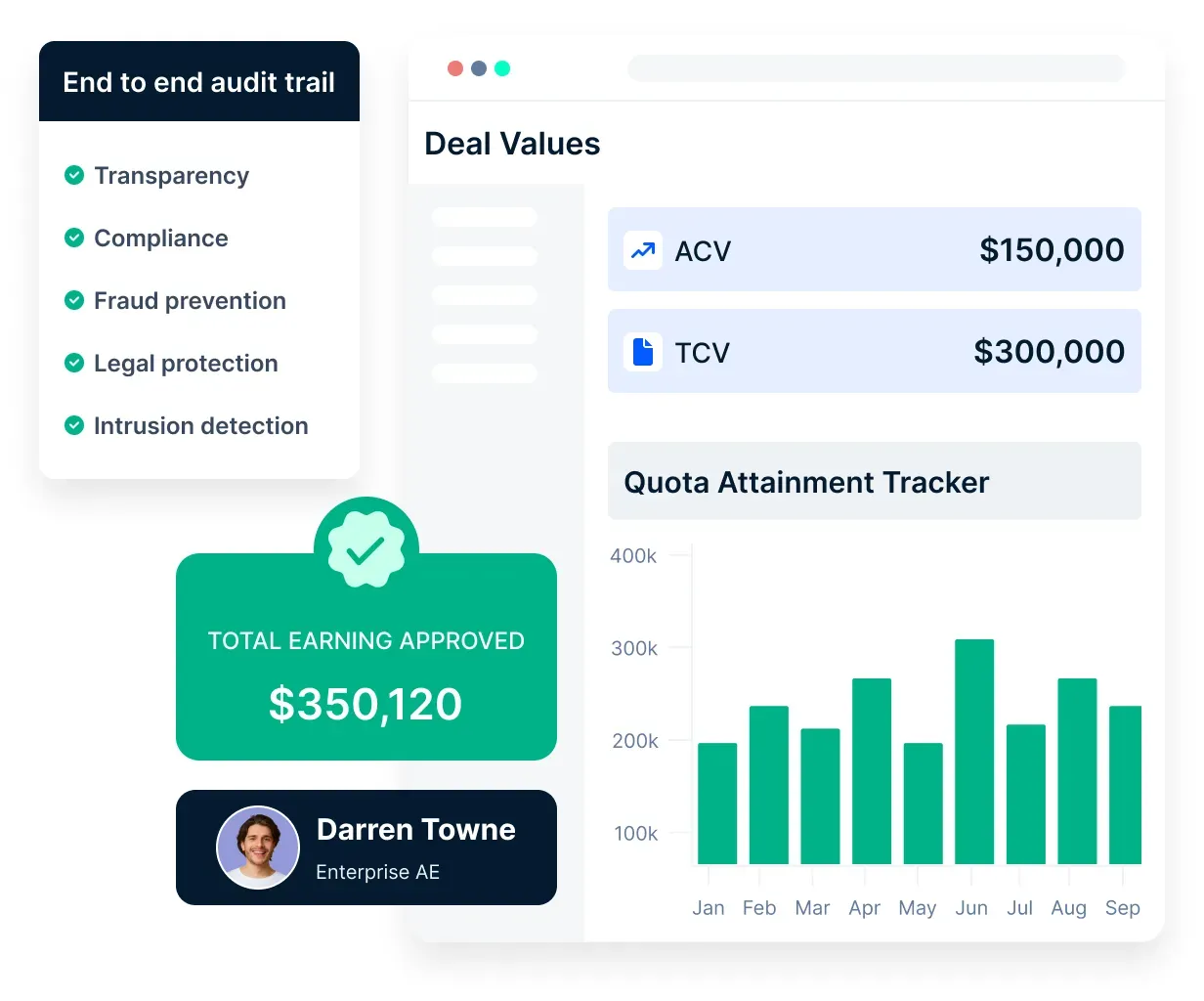
Track, Analyze, and Improve Sales Performance
Gain real-time insights into your sales pipeline with AI-powered analytics. Identify bottlenecks, optimize strategies, and drive consistent growth with Compass.
Start Tracking Performance
Success factors for sales performance management
Maximize your success while implementing a performance management system for the sales team by paying attention to these critical success factors.
1. Scope the project accurately
A deep understanding of the project is essential to scoping it accurately. Ensure you involve your internal teams at all stages and gain insight into the assumptions made at each stage.
2. Prioritize the requirements
Determine what you want to achieve with your sales performance management solution system. In case of multiple goals, prioritize them and consider rolling out the solution in phases to address the key needs first and minimize risk.
3. Check data quality before implementation
The data involved in arriving at your incentive plans need to be complete, coherent, and accurate. This ensures that trust is generated and also eliminates the need for manual invention at later stages.
4. Determine the TCO accurately
Apart from licenses, you also need to factor in the cost of implementation, infrastructure, hardware, training, and upgrades. You would also want to consider the future cost of analytics for the year-on-year data that will emerge.
5. Select a scalable solution
Choosing a solution that will scale with your business is key. In practice, this translates to solutions that can handle ever-increasing data and adapt to more complex workflows.
6. Designate a skilled internal project manager
Ensuring that you have experienced project managers both internally and externally (i.e., with vendors or other third parties) can go a long way in helping you avoid additional expenses and delays at later stages.
7. Offer sufficient training
Training or coaching is an essential component of a successful SPM solution. A good one will offer tools and support for scheduling personalized or targeted coaching to each sales rep, provide feedback, and analyze results.
8. Choose flexible compensation plans
The best SPM systems allow users to alter their compensation plans without the support of their IT teams. To achieve this, both an intuitive interface and the familiarity of subject matter experts with the SPM system are key.
9. Leverage data to encourage employees
Great reporting leads to great sales performance. A detailed breakdown shows how each rep’s compensation arrived at reduces disputes while real-time goal attainment reports provide them with clear information on their progress towards quota achievement.
5 Critical sales problems and how management by process can address them
1. Failing to respect customer needs (or the lack thereof!)
Too often, sales reps intend to deliver a prepared script to their prospects or customers and end up not listening to what the latter is saying to them at the moment. The result? Irritated prospects and wasted time.
Rather, the idea in sales is to identify prospects with a need for the product and create value for them with an effective opening question, a good headline, etc.
2. Adding to salespeople’s woes
Measures that organizations take to assist salespeople in reaching their goals often backfire. A classic example here is that of a CRM, which adds to reporting tasks instead of eliminating them.
Sales coaching, which takes up a significant chunk of time from the salespeople’s day, is another example. When designing new processes, if the approach ensures that they add value to all the stakeholders involved, these problems can be kept at bay.
3. Making assumptions instead of using hard data
There is a time and place for using one’s gut instinct in business, and it’s not in areas where hard data is already present and pointing you in a different direction. Often, the former approach leads to wrong assumptions being made - a problem that can be rectified by sifting through data from the field and basing decisions on that instead.
4. Following the process to a fault!
While following the sales process put in place is desirable in most cases, it must be remembered that this alone isn’t the goal. Every process has a goal in mind, and that of the sales process is to get customers or prospects to pay for your products or services.
Optimizing processes can get in the way of this as it may gobble up salespeople’s time, leaving them with little of it to get actual selling done. Instead, find out from your sales folk where they have the most trouble - finding, closing, or keeping their deals - and take a hint when processes are not being followed.
5. Managing for results rather than deal flow
If the sales manager is required to make the decisions and be there every time a deal is closed, the organization becomes dependent on them to bring in results, and the brand suffers in their absence. The solution is management by the process; in other words, putting people-independent processes in place to keep the deals flowing - both now and in the future.
SPM calls for a culture that is built on experimentation, innovation, and continuous improvement. It focuses on what really works, stripping away everything else. In the end, SPM is for the sales scientist who is prepared to leave behind the mistakes of the past and march forward boldly into a brave future!
Enhancing sales performance management with Compass
Sales performance management isn’t just about tracking numbers—it’s about creating a system that drives continuous improvement, accountability, and motivation within sales teams. Compass simplifies this process by providing a real-time, AI-powered platform that helps organizations track performance, optimize incentives, and keep sales teams engaged and aligned with business goals.
Real-time performance tracking for better visibility
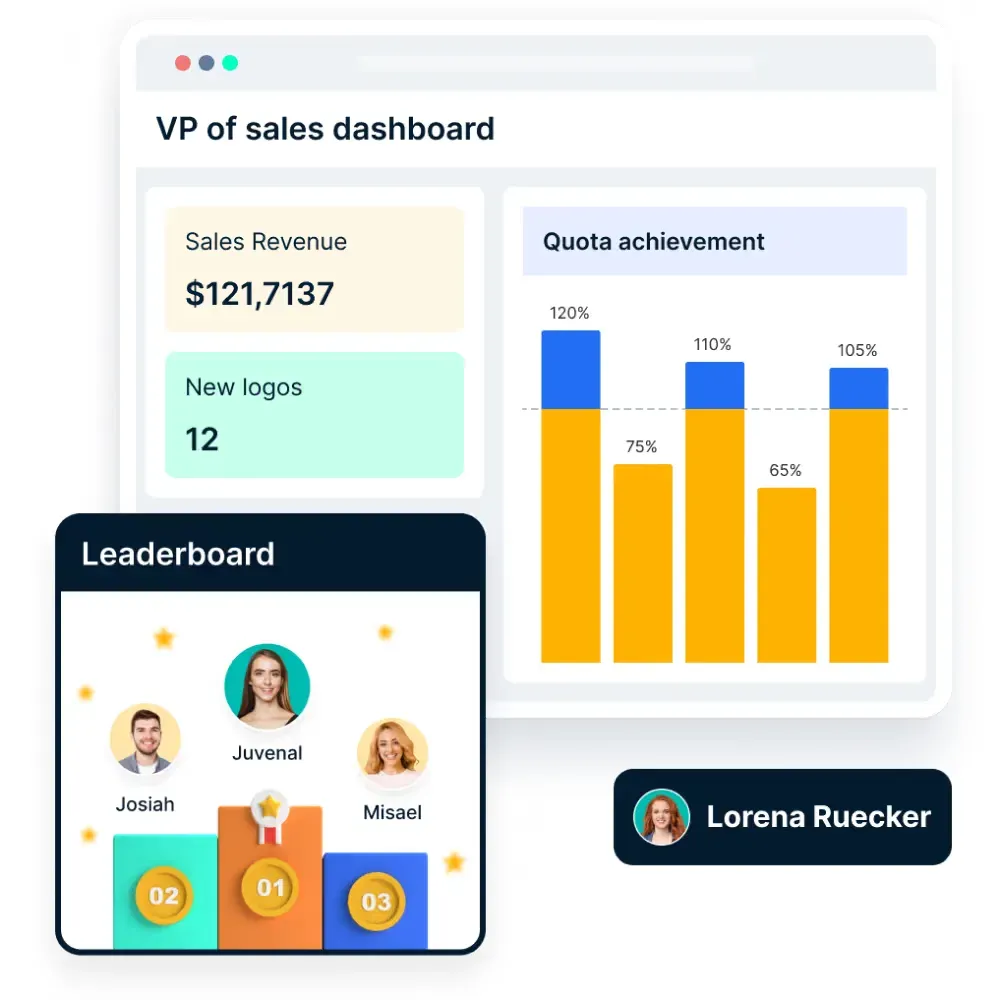
Sales leaders need instant access to performance data to make informed decisions. Compass provides live dashboards that track individual and team progress, allowing managers to identify trends, spot underperformance early, and adjust strategies in real time. With instant feedback loops, sales reps can see how they’re performing and take immediate action to improve.
Automated incentive and commission management
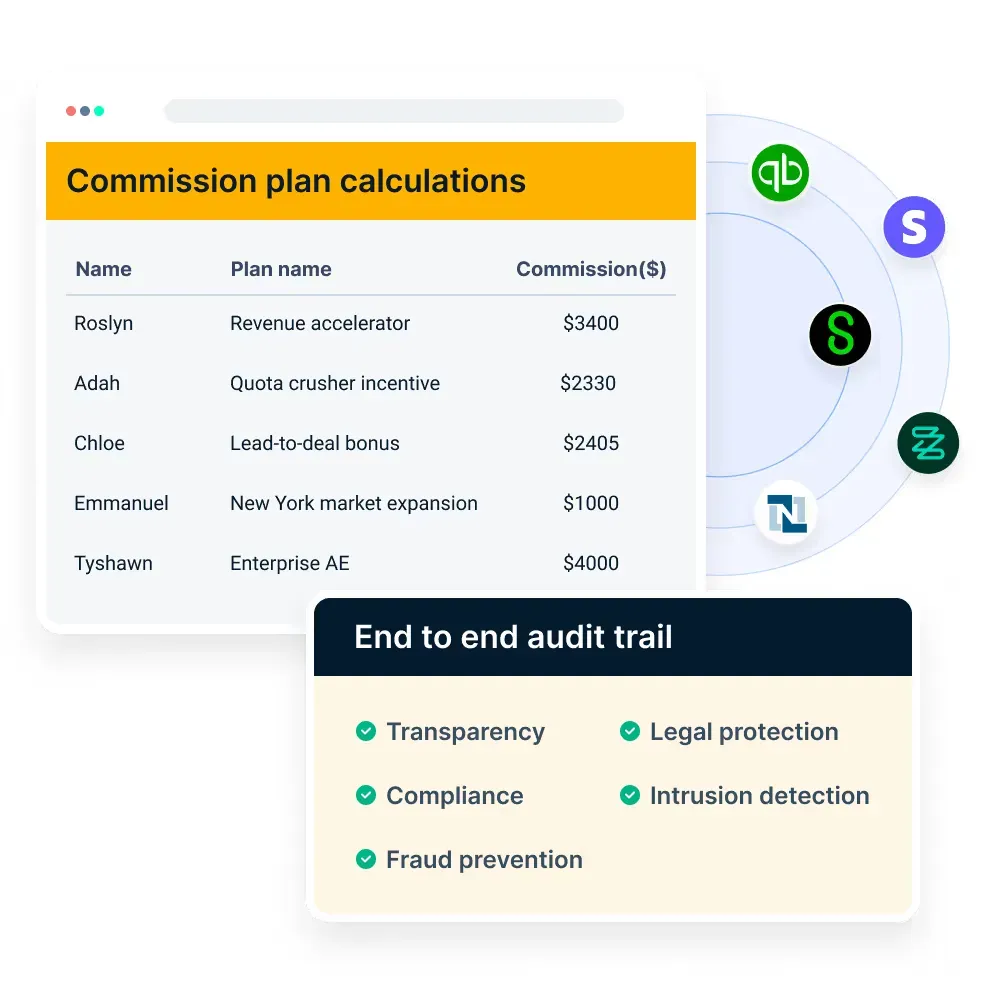
Managing commissions manually can be time-consuming, prone to errors, and frustrating for sales teams. Compass automates incentive calculations and payouts, ensuring that every commission is accurate, transparent, and instantly processed. Sales reps can track their earnings in real time, boosting motivation and eliminating disputes over incorrect payments.
Gamification and sales contests to boost engagement
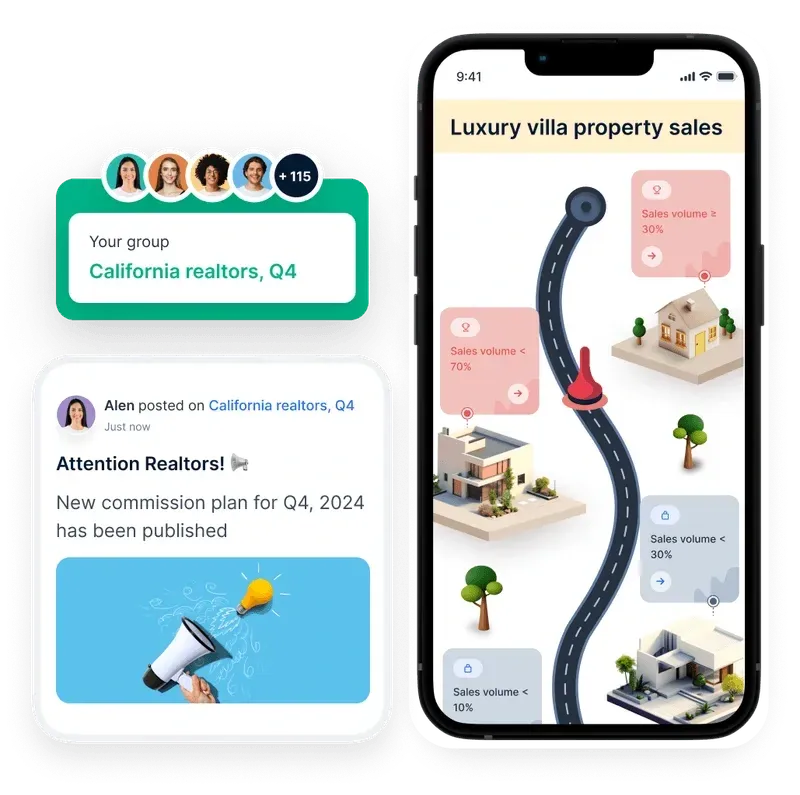
Keeping sales teams engaged requires more than just targets and quotas—it requires healthy competition and real-time recognition. Compass integrates gamified elements like leaderboards, milestone-based challenges, and AI-driven sales contests to keep sales reps excited and motivated. With instant rewards for hitting targets, sales teams stay focused and driven to perform at their best.
Seamless CRM and payroll integrations for efficiency
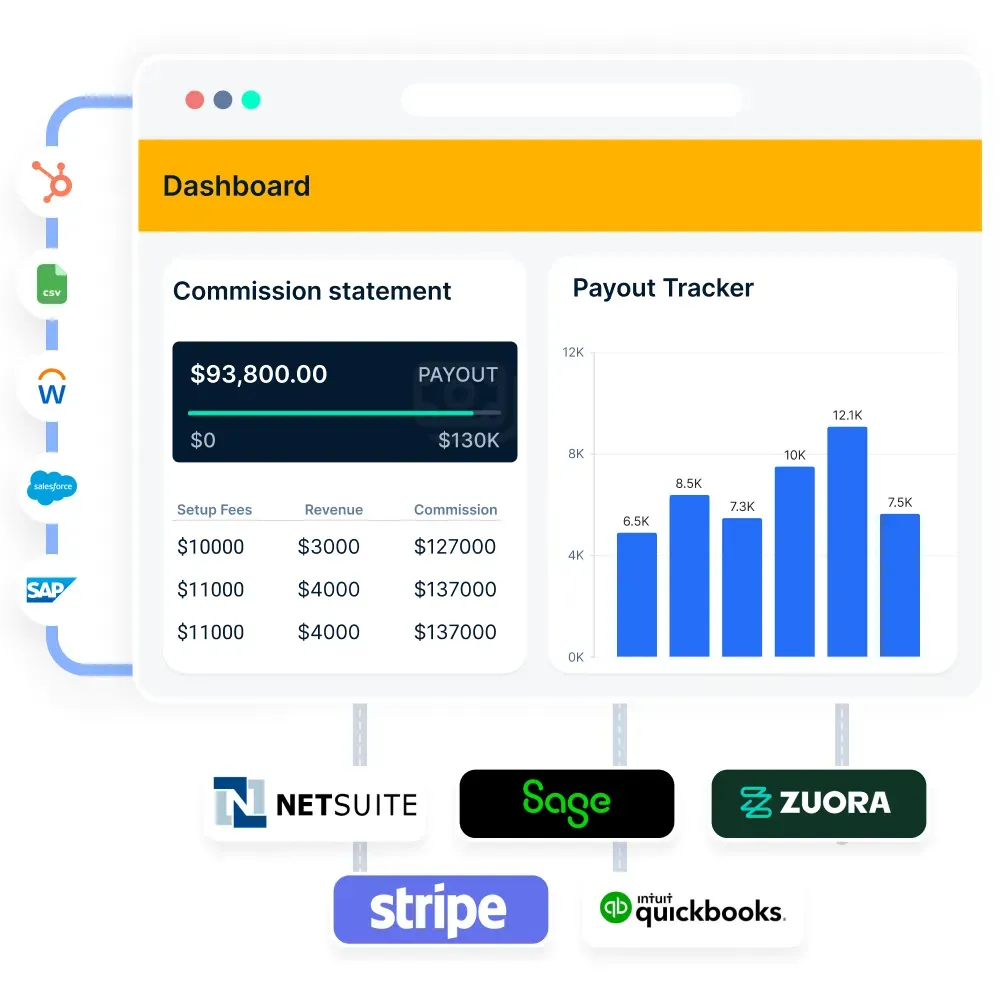
Compass connects effortlessly with CRM, payroll, and analytics tools, ensuring smooth data flow across sales operations. This reduces manual work, streamlines incentive tracking, and improves accuracy in performance analysis—allowing managers to focus on strategic sales growth rather than administrative tasks.
Why Compass is a game-changer for sales performance management
With Compass, organizations can move beyond traditional performance tracking and create a highly engaged, goal-driven sales force. By automating incentives, personalizing coaching, and gamifying sales efforts, Compass ensures that sales teams are motivated, productive, and consistently exceeding targets.
🚀 Ready to transform your sales performance management? Get started with Compass today!
Conclusion: Elevating sales performance with the right strategy
Sales performance management is more than just tracking numbers—it’s about building a motivated, high-performing sales force that consistently delivers results. A well-structured SPM approach ensures clear goals, real-time feedback, data-driven coaching, and incentive programs that keep sales teams engaged and aligned with business objectives.
By leveraging technology, automation, and gamification, businesses can streamline performance tracking, improve sales effectiveness, and drive long-term success. When sales reps have the right tools, visibility, and motivation, they don’t just meet expectations—they exceed them.
The future of sales performance management lies in real-time insights, personalized coaching, and transparent incentives—ensuring that every rep is set up for success. Investing in the right SPM strategies today means stronger sales outcomes, increased retention, and a more engaged workforce tomorrow.














